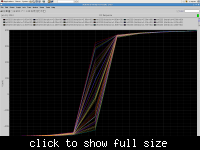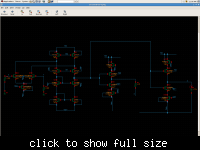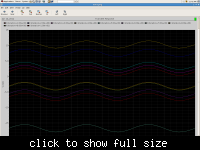engrMunna
Advanced Member level 4
Hi,
In an op-amp, or a compaarator for that matter, if you plot the input differential voltage vs the output voltage, we get a transfer curve like an inverter. Now if I do montecarlo simulations on transistor mismatches, the output curve is shifted. I am attaching a picture which shows the montecarlo simulation for an opamp where a sweep of the differential input voltage is performed. This offset can cause the op-voltage to stick to one of the rails. Although this off set can be finished by offset cancelation loop, but these loops too require an opamp. My question is that I have never seen commercialy available op-amps with such offset compensation, then how do they work? I mean there is bound to be some mismatch which causes these offsets? Any pointers on how to work round this problem? I have a offset compensation loop but that too would require an opamp?

In an op-amp, or a compaarator for that matter, if you plot the input differential voltage vs the output voltage, we get a transfer curve like an inverter. Now if I do montecarlo simulations on transistor mismatches, the output curve is shifted. I am attaching a picture which shows the montecarlo simulation for an opamp where a sweep of the differential input voltage is performed. This offset can cause the op-voltage to stick to one of the rails. Although this off set can be finished by offset cancelation loop, but these loops too require an opamp. My question is that I have never seen commercialy available op-amps with such offset compensation, then how do they work? I mean there is bound to be some mismatch which causes these offsets? Any pointers on how to work round this problem? I have a offset compensation loop but that too would require an opamp?




